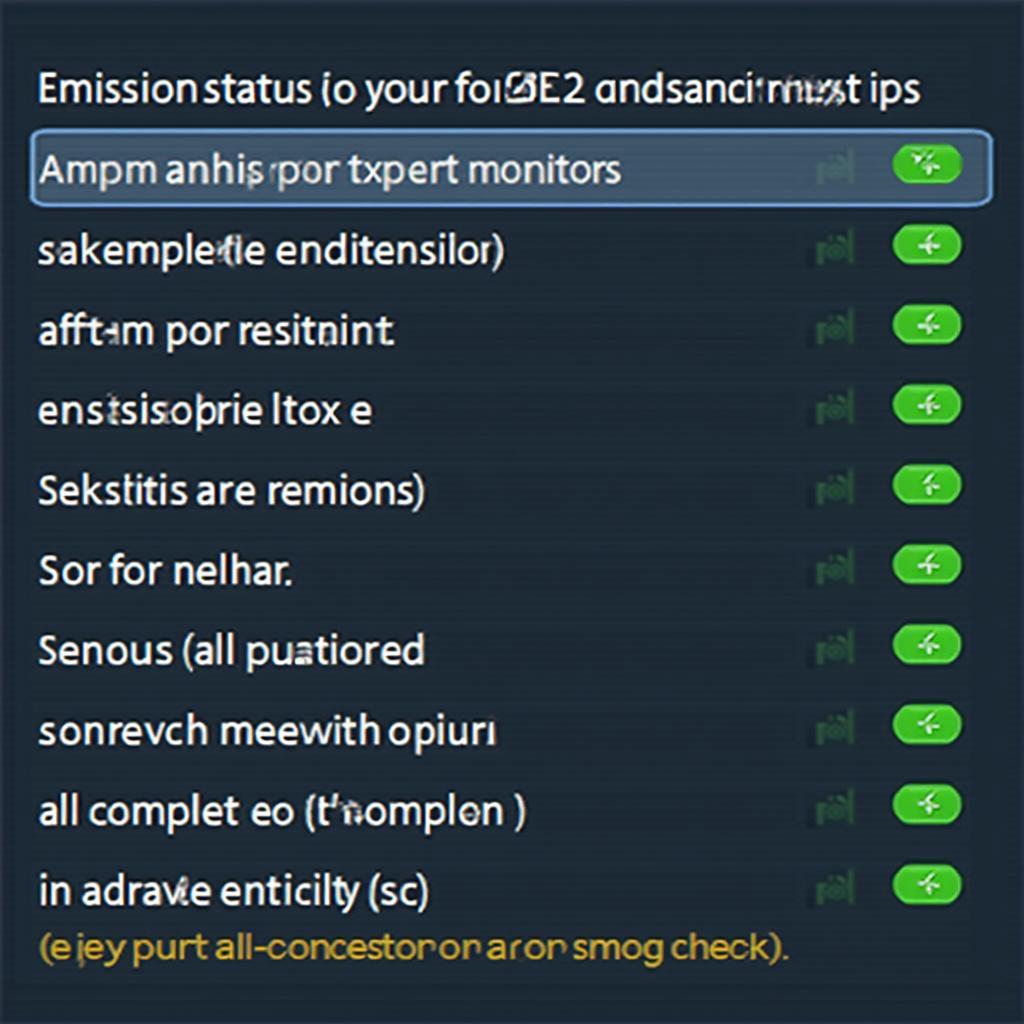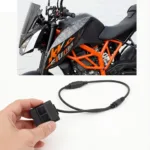OBD2 monitors smog check readiness and play a vital role in ensuring your vehicle meets emission standards. Understanding how these monitors work can save you time, money, and frustration at the smog check station.
Decoding OBD2 Monitors for Smog
OBD2, or On-Board Diagnostics II, is a standardized system that monitors various components of your vehicle’s emissions system. These components are grouped into what are known as “monitors.” Each monitor performs specific tests to ensure that a particular part of the emissions control system is functioning correctly. If a monitor detects a problem, it will trigger a diagnostic trouble code (DTC) and illuminate the check engine light (CEL). For a successful smog check, these monitors need to be “ready” or “complete.” This means they have run their tests and reported their results.
A common misconception is that a clear check engine light guarantees a passed smog test. This isn’t always true. passsing smog without obd2 might sometimes be possible but not recommended. Even without a CEL, some monitors may not have completed their tests, resulting in a failed smog check. This often happens after a recent battery disconnect or ECU reset. Driving your vehicle under specific conditions is necessary to allow the monitors to run their tests and set a “ready” status.
How Many OBD2 Monitors Does My Car Have?
The number of OBD2 monitors varies depending on the vehicle’s make, model, and year. Most vehicles have between 8 and 11 monitors, covering systems like the catalytic converter, evaporative emissions, oxygen sensors, and EGR system. You can use an obd2 cel identifier to check what’s wrong with your vehicle.
Why Are OBD2 Monitors Important for Smog Checks?
Smog checks use the OBD2 system to verify that your vehicle’s emissions control systems are functioning properly. If one or more monitors are not “ready,” the smog technician cannot accurately assess your vehicle’s emissions, resulting in a failed smog check.  OBD2 Monitor Readiness Status
OBD2 Monitor Readiness Status
Common OBD2 Monitors and Their Function
Here’s a look at some of the most common OBD2 monitors:
- Catalyst Monitor: Checks the efficiency of the catalytic converter.
- Evaporative System Monitor: Detects leaks in the fuel system.
- Oxygen Sensor Monitor: Monitors the performance of the oxygen sensors.
- EGR System Monitor: Checks the Exhaust Gas Recirculation (EGR) system.
- Misfire Monitor: Detects engine misfires.
Understanding these monitors is crucial for maintaining your vehicle’s emission system and passing smog checks. lemur vehicle monitors obd2 scanner is a good tool to check these monitors.
How to Get OBD2 Monitors Ready for Smog
Driving your vehicle under varying conditions, such as city and highway driving, can help complete the monitor tests. However, specific drive cycles are often required to set certain monitors. These drive cycles involve specific speed, acceleration, and deceleration patterns. Consult your vehicle’s repair manual or an experienced mechanic for information on specific drive cycles.
“Driving your vehicle regularly under diverse conditions is the best way to ensure your OBD2 monitors are ready,” says John Miller, a certified automotive technician with 20 years of experience.
OBD2 Monitors and Smog Check Regulations
Smog check regulations vary by state. Some states allow a certain number of incomplete monitors, while others require all monitors to be ready. obd2 monitors california has specific regulations. It’s important to familiarize yourself with your local regulations.
“Staying informed about your state’s specific OBD2 and smog regulations is crucial for a smooth and successful smog check,” advises Sarah Chen, an automotive emissions specialist.
Conclusion
OBD2 monitors smog check readiness and are essential for ensuring your vehicle meets emission standards. Understanding how these monitors work, how to prepare them for a smog check, and staying informed about local regulations can save you time and hassle. By understanding how your vehicle’s OBD2 system interacts with smog checks, you can contribute to a cleaner environment and avoid potential fines and repair costs. obd2 p440 is a common code that can cause smog check failure.
FAQ
-
What does it mean when an OBD2 monitor is “not ready”? It means the monitor hasn’t completed its diagnostic test.
-
How can I check the status of my OBD2 monitors? You can use an OBD2 scanner.
-
How long does it take for OBD2 monitors to become ready? It varies depending on the monitor and driving conditions, but it can take from a few minutes to several days.
-
What should I do if my OBD2 monitors are not ready for my smog check? Drive your vehicle under varying conditions to complete the monitor tests. Consult your vehicle’s repair manual or a mechanic for specific drive cycles.
-
Can I pass a smog check with incomplete monitors? Regulations vary by state, so check with your local DMV.
-
What if my check engine light is on? You will likely fail the smog check. Get the underlying issue diagnosed and repaired.
-
Does disconnecting the battery reset the OBD2 monitors? Yes, it will reset the monitors and they will need to complete their tests again.
Contact Us
Need help with your OBD2 scanner or have questions about smog checks? Contact us via WhatsApp: +1(641)206-8880, Email: [email protected] or visit us at 789 Elm Street, San Francisco, CA 94102, USA. Our customer support team is available 24/7.

